-
Oshkosh Defense unveils new light vehicle for unconventional missions
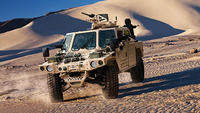
Using the occasion of the Modern Day Marine 2012 exposition, held 25-27 September in Quantico, Virginia, Oshkosh Defense unveiled its new Special Purpose All-Terrain Vehicle (S-ATV) designed for unconventional and reconnaissance missions, and also showed its Light Combat Tactical All-Terrain Vehicle (L-ATV), which was selected for the Joint Light Tactical Vehicle (JLTV) Engineering, Manufacturing and Development (EMD) phase; the joint services are expected to replace tens of thousands of HMMWVs with the JLTV
-
-
U.K. military’s drone spending keep rising
In an effort to boost its military, the United Kingdom, over the past five years, has spent more than two billion euros buying and developing unmanned drones; the U.K. has no intention of slowing down, as it is committed to spending another two billion euros on new unmanned aircraft
-
-
Former L-3 employee guilty of selling weapon secrets to China

A federal court judge in Newark, New Jersey convicted Sixing Liu on six counts of violating the Arms Export Control Act as well as possessing stolen trade secrets, transporting stolen property, and lying to federal agents; Liu is was convicted of stealing thousands of electronic files detailing performance and design of guidance systems for missiles, rockets, target locators, and unmanned aerial vehicles in 2010
-
-
Explosives dumped into Gulf of Mexico pose big problems
Millions of pounds of unexploded bombs and other military ordnance that were dumped decades ago in the Gulf of Mexico, as well as off the coasts of both the Atlantic and Pacific oceans, could now pose serious threats to shipping lanes and the 4,000 oil and gas rigs in the Gulf, warns two oceanographers
-
-
Technology soon to make drones deadlier, more autonomous
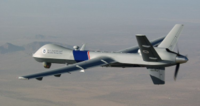
Unmanned aerial vehicles (UAVs) have become America’s main weapon in the campaign against terrorists — at the forefront are the Predator and the Reaper — and technological changes would soon make them even deadlier; in the next decade drones will be faster and carry more weapons than today’s versions; they will also have better sensors and more sophisticated computers, allowing them to plan and execute attacks with little human participation
-
-
Why common explosive sometimes fails
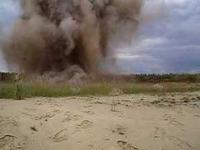
The explosive PETN has been around for a century and is used by everyone from miners to the military, but it took new research by Sandia National Laboratories to begin to discover key mechanisms behind what causes it to fail at small scales
-
-
Harvesting fuel for the fleet from seawater
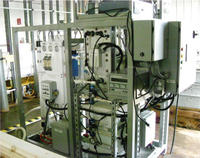
Refueling U.S. Navy vessels, at sea and underway, is a costly endeavor in terms of logistics, time, fiscal constraints, and threats to national security and sailors at sea; in Fiscal Year 2011, the U.S. Navy Military Sea Lift Command, the primary supplier of fuel and oil to the U.S. Navy fleet, delivered nearly 600 million gallons of fuel to Navy vessels underway, operating fifteen fleet replenishment oilers around the globe; the Naval Research Laboratory believes there is a better way: extracting carbon dioxide (CO2) and producing hydrogen gas (H2) from seawater and then catalytically converting the CO2 and H2 into jet fuel
-
-
Raytheon Aerostat, SM-6 missile work together to protect ships
As tensions continue to rise over Iran’s nuclear weapons program, and the likelihood of military action to stop Iran from acquiring nuclear weapons increases – military action which would place U.S. ships in the Persian Gulf and the Indian Ocean at risk — there is good news from Raytheon: soon the seas may be a little safer
-
-
Precision agriculture using military technology: drones
Drones are military aircraft currently being repurposed for everyday use, especially within the growing field of precision agriculture; these flying robots allow farmers to detect changes in water content, plant health, and pesticide dispersal in their fields
-
-
Threat-recognition technology incorporates mind, machine
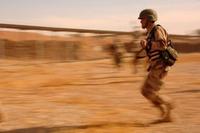
For soldiers operating in the field, the ability to detect threats from standoff distances can be life-saving; when advanced radar and drone coverage is not available, soldiers typically rely on their own vision to scan their surroundings; DARPA links human brainwaves, improved sensors, and cognitive algorithms to improve target detection
-
-
Four-legged “pack mule” robots demonstrate their capabilities
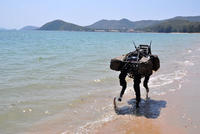
Two completed prototype robotic “pack mules” exhibit reduced noise, new gaits, and improved perception, the two functioning platforms have started to run through the paces similar to what they could one day experience carrying gear for a squad of Marines or Soldiers
-
-
More cyber-secure UAVs
The software that runs complex military systems such as UAVs contains tens of thousands of lines of code; this code is designed by human beings, and human beings make mistakes; DARPA wants military systems to be run by fail-safe software, ad for this purpose has created the High-Assurance Cyber Military Systems (HACMS) program; Rockwell Collins has been selected as the prime contractor for the unmanned air vehicle portion of the HACMS
-
-
Serious limitations make boost-phase missile interception impractical
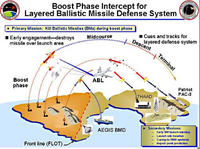
One of the central elements of President Reagan’s 1983 “Star Wars” ballistic missile defense initiative was boost-phase defense: boost-phase defense systems are intended to shoot down enemy missiles immediately following launch while the rocket engine is still firing; a new congressionally mandated study by the National Research Council study says that to defend against ballistic missile attacks more effectively, the United States should concentrate on defense systems that intercept enemy missiles in midcourse and stop spending money on boost-phase defense systems of any kind
-
-
Apple rejects app which tracks drone strikes against militants
Apple has rejected an app, developed by a New York student, which tracks U.S. drone strikes in Pakistan; Apple said the app violated rule 16.1 of its guidelines, which bans “excessively objectionable or crude content”
-
-
Netanyahu cancels security cabinet meeting on Iran after leaks

Israel’s prime minister, Benjamin Netanyahu, scheduled a 2-day marathon meeting of Israel’s security cabinet for Tuesday and Wednesday, with an 8-hour session planned for each day; the 2-day meeting was called for a thorough and comprehensive – and probably decisive — discussion of Iran’s nuclear weapons program and what should Israel do about it; the speakers on Tuesday included the directors of Israel’s military and civilian intelligence agencies; early Wednesday, Netanyahu abruptly canceled the meeting’s second session because of leaks from Tuesday top-secret meeting session appeared in the Israeli press
-
More headlines
The long view
Bookshelf: Smartphones Shape War in Hyperconnected World
The smartphone is helping to shape the conduct and representation of contemporary war. A new book argues that as an operative device, the smartphone is now “being used as a central weapon of war.”
